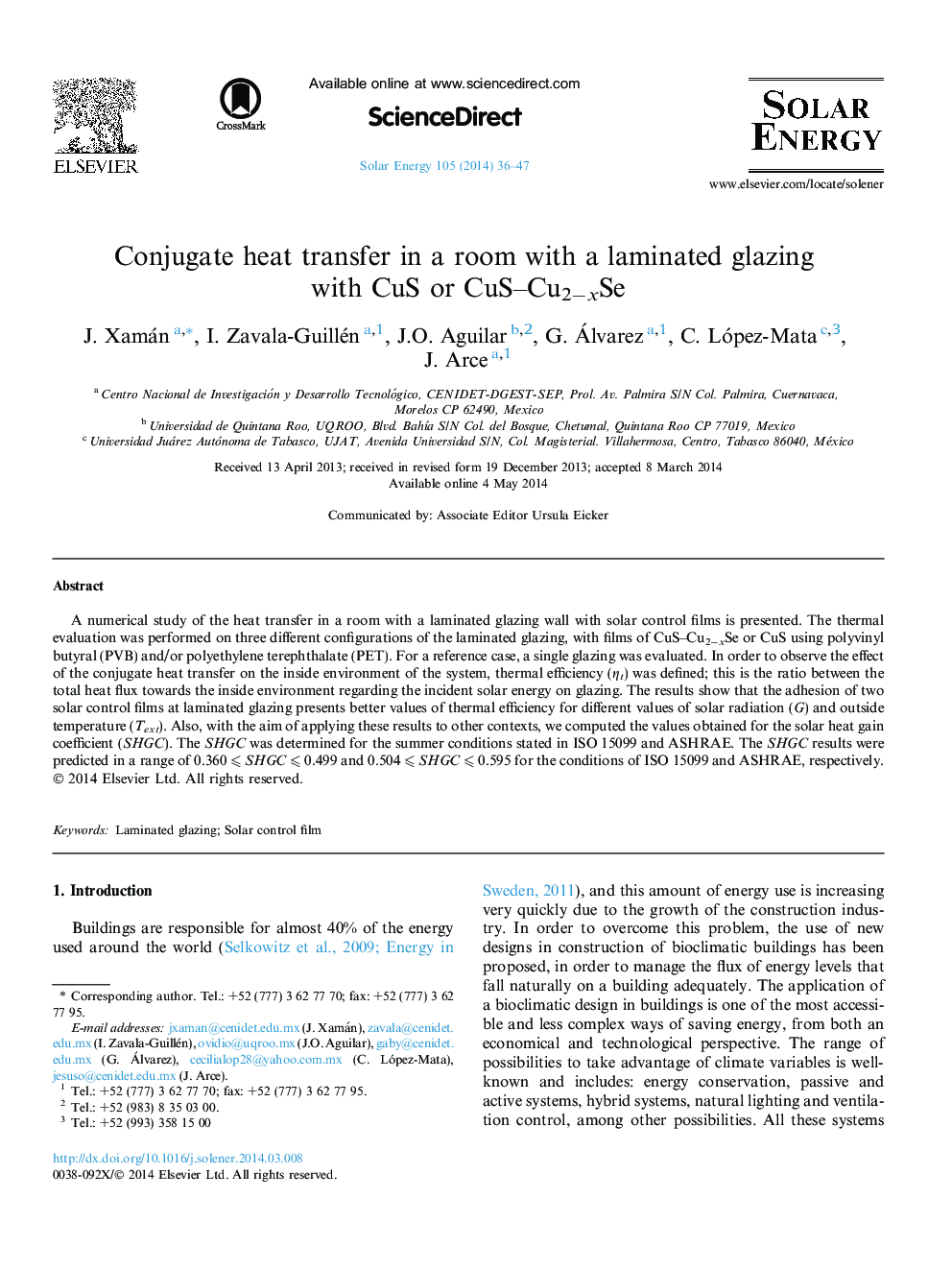| Article ID | Journal | Published Year | Pages | File Type |
|---|---|---|---|---|
| 1550030 | Solar Energy | 2014 | 12 Pages |
•A STF on laminated glazing does not guarantee a reduction on the heat flux.•The case C3 shows the lowest values of ηt.•Cases C1 and C2 show higher values of ηt with respect to case C (single glass).•Values of the ηt as a function of G and Text were obtained.•The SHGC results were of 0.360 ⩽ SHGC ⩽ 0.499 for the conditions of ISO 15099.
A numerical study of the heat transfer in a room with a laminated glazing wall with solar control films is presented. The thermal evaluation was performed on three different configurations of the laminated glazing, with films of CuS–Cu2−xSe or CuS using polyvinyl butyral (PVB) and/or polyethylene terephthalate (PET). For a reference case, a single glazing was evaluated. In order to observe the effect of the conjugate heat transfer on the inside environment of the system, thermal efficiency (ηt) was defined; this is the ratio between the total heat flux towards the inside environment regarding the incident solar energy on glazing. The results show that the adhesion of two solar control films at laminated glazing presents better values of thermal efficiency for different values of solar radiation (G) and outside temperature (Text). Also, with the aim of applying these results to other contexts, we computed the values obtained for the solar heat gain coefficient (SHGC). The SHGC was determined for the summer conditions stated in ISO 15099 and ASHRAE. The SHGC results were predicted in a range of 0.360 ⩽ SHGC ⩽ 0.499 and 0.504 ⩽ SHGC ⩽ 0.595 for the conditions of ISO 15099 and ASHRAE, respectively.
